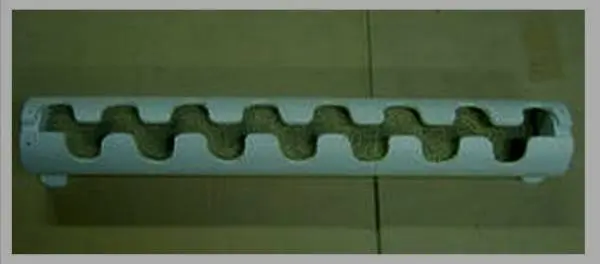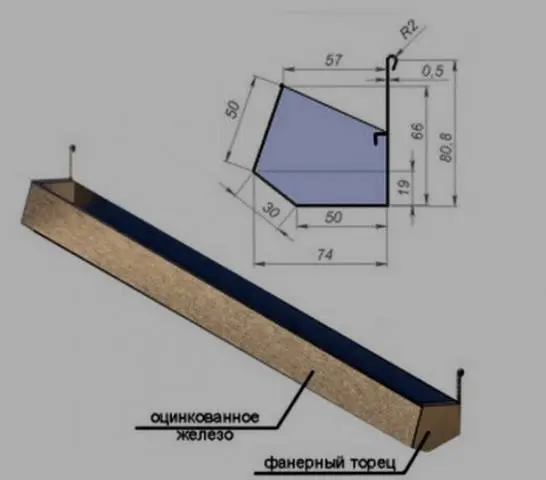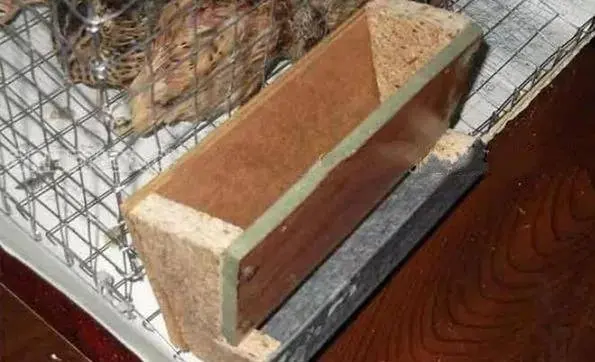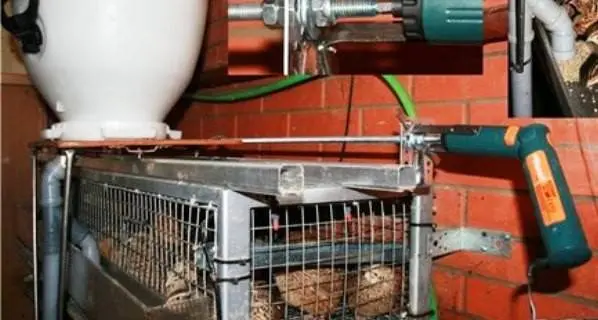Contents
The main share of the funds of the owner containing quails goes to the purchase of feed. Improperly organized feeding can turn a profitable business into a loss. Often such problems arise due to poor feeders. Birds are able to scatter up to 35% of the feed, and this is already an extra cost, plus dirt inside the cages. A bunker feeder for quails installed outside the cage will help correct the situation. Birds through the grate will reach for food only with their heads to eat, without having the slightest chance to scatter it.
Basic requirements for feeders
The development of chicks and adults will depend on how hygiene is observed. When breeding quails, the following requirements are imposed on feeders:
- The material for the manufacture of feeders is desirable to choose environmentally friendly and non-corrosive. If it is metal, then it is better to take stainless steel or non-ferrous alloys. Glass or porcelain will do, but this design will turn out to be fragile. Food grade plastic is allowed. Ideally, any material for the feeder should be well washed.
- The size of the feeder depends on the number of livestock in the cage. In terms of volume, the hopper should hold a little more feed, poured for a one-time feeding of all the birds in the cage.
- The design of the product should provide the quail with easy access to the feed, but at the same time, the height of the sides must be chosen so that the bird does not rake the compound feed out of it.
It is important to take care of the convenient access of a person to the bunker, because the feed will have to be poured at least three times a day.
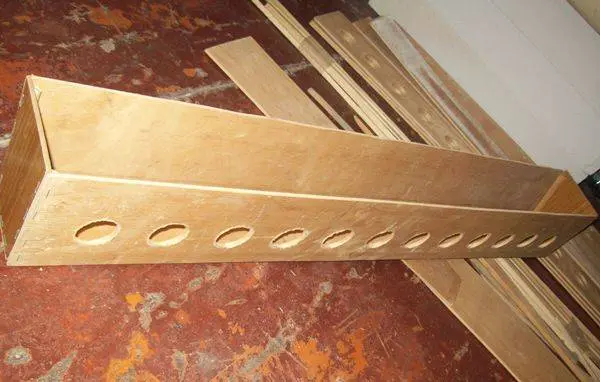
The designs of quail feeders differ in the way feed is supplied. The most common models are:
- Tray type feeders can be installed both inside the cage and outside it. The external location does not allow quails to scatter food. Tray models are suitable for the same type of food, and are installed only for chicks.

- Trough type feeders suitable for feeding chicks, as well as adult quails. The structure is fixed from the outside of the cage. When using a trough feeder, you need to take care of the minimum approach width for each quail at the rate of 50 mm per individual.

- Hopper type feeders are considered the best invention for feeding quails. You can install it outside and inside the cage. Only dry food is poured inside the hopper, which is gradually poured into the lower tray. As the quail eats the feed in the pan, a new portion is poured from the bunker itself.

- Feeders automatic type is an improved modification of the bunker model. They are rarely used in the household. Most often, such structures are used on a quail farm to simplify the feeding of a large number of quails. The automatic feeder consists of the same tray with a hopper, only a timer-operated dispenser has been added. Feed is automatically poured into the tray at the set time without human intervention.

Each of the feeders has its own advantages and disadvantages, but for a household, a bunker model would be an ideal choice.
Self-manufacturing of the bunker structure
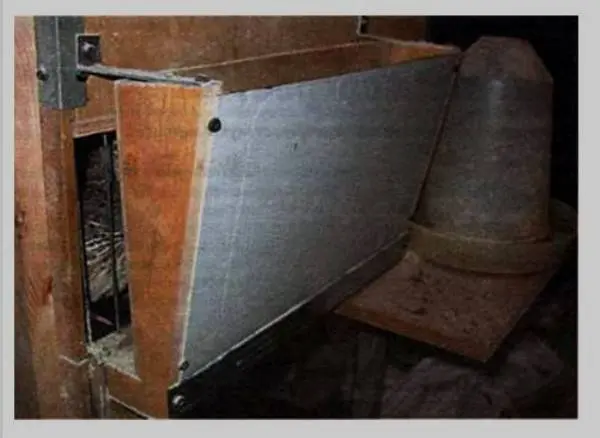
It is very easy to make a bunker feeder for quails with your own hands. There is no need to even build a complex drawing. We will immediately begin work by cutting off the galvanized profile. It will serve as a tray where food will be fed. The length of the profile depends on the dimensions of the cage and the number of birds. Each quail should have enough space to freely approach the tray.
The next elements will be the side walls of the bunker and at the same time the end caps of the profile. Two identical blanks are cut out of plywood, resembling the number seven. If you turn them over, you get a figure resembling a boot. The top of the blanks goes to the expansion for the convenience of filling the feed. The width of the lower part of the inverted seven should correspond to the distance between the side shelves of the profile.
Both sevens are inserted upside down on the sides of the cut profile and fixed with self-tapping screws. Next, two rectangular blanks are cut out of the plywood sheet along the length of the profile. These will be the main walls of the bunker. Both blanks are similarly fastened with self-tapping screws to the profile shelves and the sides of the bunker in the form of a boot.
On this feeder is almost ready. From below it turned out to be a tray, on the side – a towering V-shaped bunker. You can fix the product inside the cage, but it is better to install it outside. Quails through the net will reach the tray, and it is more convenient for the owner to pour food into the bunker.
Such a design does not have to be made of plywood. If you have a welding machine, the quail feeder can be welded from stainless steel.
By the way, we considered the process of making the feeder, but did not find out what volume of the bunker is needed. Here you have to make some simple calculations. An adult quail eats about 30 g of feed per feeding. You need to feed the bird 3 times a day. If quails are fed for meat, the daily ration is increased up to four times. The amount of food eaten per day must be multiplied by the number of quails living in the cage. This will be the daily feed ration for all quails fed from the bunker feeder. Now it remains to calculate the volume of the bunker so that all this feed will fit. It is desirable to add a little margin to the result obtained.
If the availability of material and the size of the cage allows you to make the bunker larger, this will be a big plus. In such a feeder it will be possible to fill up food for several days.
The video shows the feeder from the profile:
The simplest bunker feeder from a PET bottle
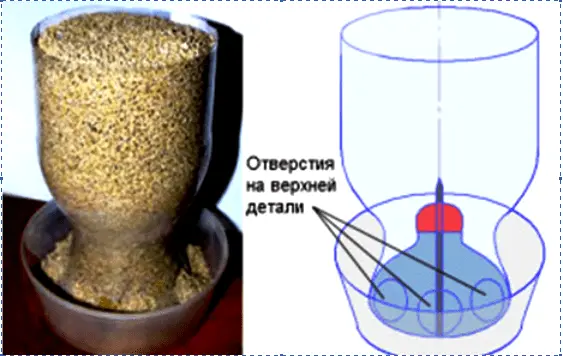
In the household, many are accustomed to making bird feeders and drinkers from plastic bottles. We will not break the tradition, and we will make a bunker model in 30 minutes. To work, you will need a two-liter plastic bottle, a sharp knife and wood screws.
Let’s take a few steps:
- We take a bottle and, stepping back from the neck 100 mm, cut out holes with a diameter of 20 mm in a circle. You should get 5-6 round windows.
- Now, with a sharp knife above the holes made, it is necessary to cut off the upper tapering part of the bottle. Here, instead of a knife, you can use scissors.
- The resulting blank is turned over and placed inside the second part of the bottle, after cutting off its bottom.
- The finished hopper is placed in a pallet, where it is screwed through with a self-tapping screw through the bottle cork.
The bunker feeder for quails from a PET bottle is ready, you can pour the feed and see how it spills out through the holes.
As you can see, making a quail bunker feeder at home is quite simple. Initially, it is only necessary to correctly calculate its volume, and then proceed to cutting the fragments.










